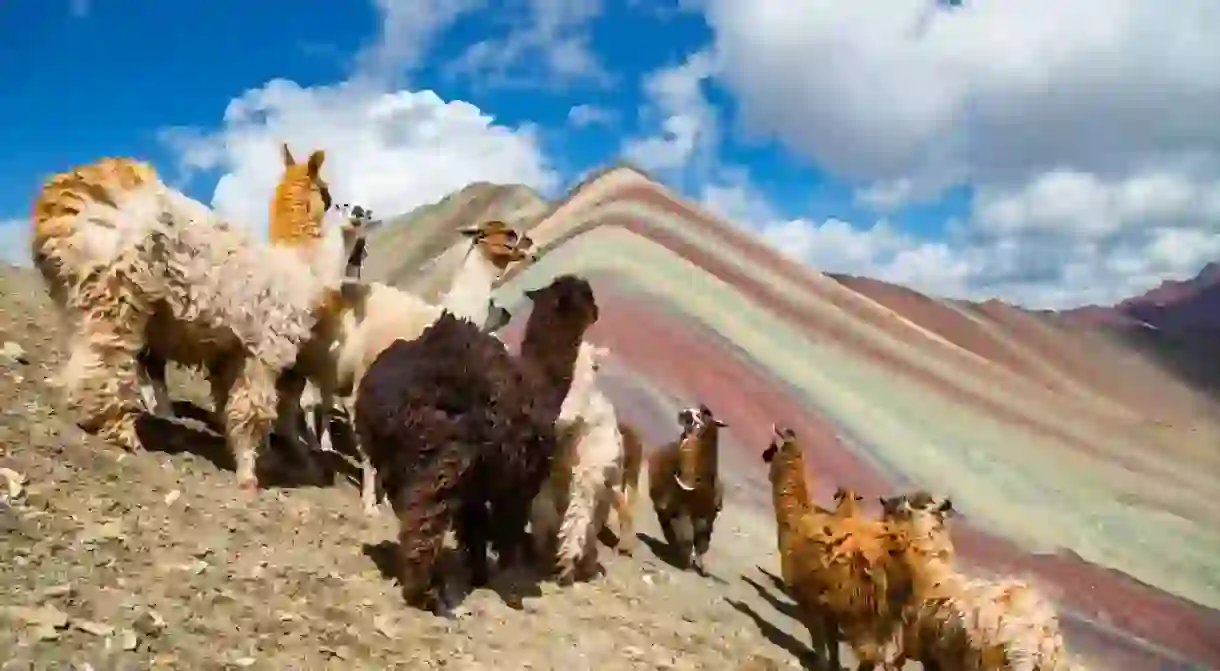The Discovery of Peru's Rainbow Mountain Has an Unfortunate Truth

Vinicunca Mountain, or the Rainbow Mountain, is one of the earth’s most amazing natural wonders. Part of the Peruvian Andes, it was concealed underneath ice and snow until recently, when climate change caused the glaciers to melt, thereby revealing the geological wonder, which has now become one of Cusco city’s most popular attractions. It is possible to hike the mountain, but important to bear in mind the reason why we are now able to do so.
Tour guides on street corners all over Cusco will ask if you want to join the one-day trek for the bargain price of $20USD. The trek includes transportation, a guide and the chance to see one of the most beautiful mountains and landscapes in Peru, so is definitely worth it. While business to the colorful mountains is booming with bus-loads of tourists heading out each day, only a couple of years ago there were no tourists visiting from Cusco because there wasn’t anything to see but snow-capped mountains. The reason why we can see the Rainbow Mountain today is because the glacier caps that once covered it in ice and snow have since melted – a casualty of the changing climate of the planet.

According to an article in Forbes, “the rainbow coloration in the stratigraphic layers of the Ausangate mountain is largely due to weathering and mineralogy. Red coloration of sedimentary layers often indicates iron oxide rust as a trace mineral. Similar to how a nail will rust and turn red when oxidized, sediments that are iron-rich will change when exposed to oxygen and water.” These stratigraphic layers have been hidden and protected under the freeze of a Peruvian Andes glacier and are only now able to be seen.

At around 6,384 meters above sea level, the hike to the top of the mountain is challenging and demands fitness, as altitude levels can change quickly. The best way to visit the mountains is through a tour operator; some of which offer the trek partly on horseback. The trek will take a few days and you will need time to rest and recuperate afterwards. The dry season is from May to September, which is the best time to do the trek.
Peruvians believe the mountain to be holy, so bear this in mind when visiting and act respectfully in accordance with local traditions. Each year, thousands of Quechua pilgrims hike to Vinicunca for the Star Snow festival (Qoyllur Rit’i) which takes place a week before the Corpus Christi feast on 31 May.













